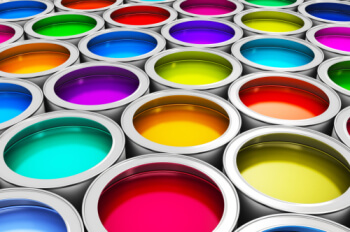What is Dye?
Dyes refer to a class of organic compounds that can give other substances a bright and firm color. Dyes are generally compounds that have their own color and can make other substances obtain bright and firm colors in a molecular or dispersed state.
Natural Dyes: Rediscovering Tradition
Natural dyes are generally derived from plants, animals and minerals, mainly plant dyes. Plant dyes are extracted from the roots, stems, leaves and fruits of plants. The number of animal dyes is small, mainly obtained from shellfish and cochineal insects. Mineral dyes are colored inorganic substances extracted from minerals, such as chrome yellow, ultramarine blue, manganese brown, etc. In recent years, people have discovered that pigments produced by microorganisms such as bacteria, fungi, and molds can also be used as sources of natural dyes.
Natural dyes are mainly used in natural fibers (wool, linen, silk, cotton) and most man-made fiber textiles, clothing, and apparel. It can also be used in handicrafts, leather goods, bamboo and wood products, and cosmetics. While using natural dyes, try not to use synthetic additives to ensure the environmental protection and naturalness of the product.
Synthetic Dyes: A Kaleidoscope of Possibilities
The earliest synthetic dyes were based on aniline, and this branch was called aniline dyes. Aniline dyes have many advantages, mainly a variety of colors, strong coloring, washability and light resistance, which are incomparable to natural dyes. The first synthetic dye was aniline violet, a purple dye that appeared in 1856.
Compared with natural dyes, synthetic dyes have many advantages such as multiple varieties, complete chromatograms, convenient dyeing processes, higher dye fastness, lower prices, easy human design of the molecular structure of dyes, and easy unified control and management of dye product quality.
How to Select Dyes?
1. Select dyes based on fiber properties: Due to different properties of various fibers, appropriate dyes need to be selected when dyeing. For example, when dyeing cotton fiber, because its molecular structure contains many hydrophilic hydroxyl groups, it is easy to absorb moisture and swell, can react chemically with reactive groups, and is more resistant to alkali, so you can choose direct dyes, vat dyes, and sulfur dyes. And reactive dyes, etc.
2. Select dyes according to the use of the dyed objects: Due to the different uses of the dyed objects, the requirements for the fastness of the dyed finished products are also different. For example, cloth used as curtains is not washed frequently, but it is often exposed to sunlight. Therefore, when dyeing, you should choose dyes with higher light fastness. For dyeing underwear and light-colored fabrics worn in summer, dyes with higher washability, lightfastness, and sweat resistance should be selected because they need to be washed and sun-dried frequently.
3. Select dyes based on dye costs: When selecting dyes, you must not only consider the color and fastness, but also consider the cost and supply of the dyes and additives used. For higher-priced dyes, you should try to replace them with other dyes that can produce the same effect to reduce production costs.
4. Select dyes based on the properties of dyeing machinery: Due to different dyeing machinery, the properties and requirements for dyes are also different. If it is used for jig dyeing, dyes with higher directness should be selected; for pad dyeing, dyes with lower directness should be selected. Otherwise, products that do not meet the requirements will be dark at the front and light at the back, with uneven color and luster.





Comments